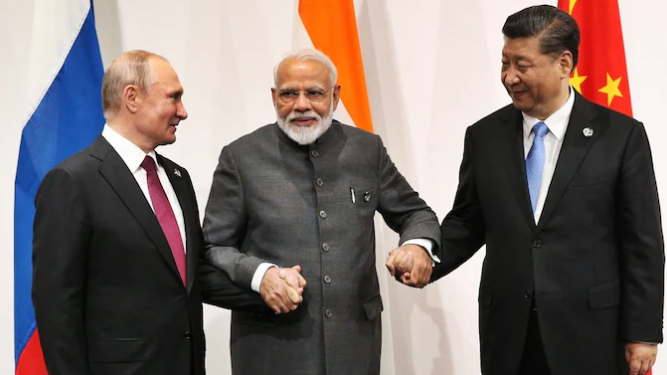1. Project Overview: Russia and China are spearheading a groundbreaking initiative to develop a nuclear power plant on the Moon. This project, led by Russia’s state nuclear corporation Rosatom, aims to deploy a small reactor generating up to 0.5 megawatts of energy.

2. India’s Potential Involvement: According to a recent report by Russian news agency TASS, there’s speculation that India might explore joining this ambitious lunar project. Rosatom chief Alexey Likhachev highlighted interest from both China and India.
3. Purpose of the Plant: The lunar nuclear plant is designed to provide a reliable power source for future lunar bases. Unlike solar power, which is ineffective during the Moon’s long nights, nuclear energy can offer continuous power.
4. Strategic Collaboration: In March 2021, Russia’s Roscosmos and China’s CNSA signed an agreement to collaborate on the International Lunar Research Station (ILRS). This collaboration includes multiple missions to lay the groundwork for lunar exploration and technology testing.
5. India’s Role: For India to join, several factors need to align, including improved diplomatic relations between India and China, technological contributions, and significant financial investment.
6. Diplomatic Relations: Despite geopolitical tensions, cooperation between India and China would be essential. This collaboration could serve as a platform for improving bilateral relations and fostering international partnerships.
7. Technological Expertise: Combining Russia’s nuclear technology, China’s space exploration advancements, and India’s recent lunar mission successes could create a powerful synergy for the project.
8. Financial Considerations: The lunar nuclear plant will require substantial funding from all involved nations. Negotiations on cost-sharing and benefits will be crucial for equitable participation.
9. Regulatory Framework: An international agreement is needed to outline responsibilities, liabilities, and operational protocols for the lunar plant. This framework will ensure smooth and safe operations.
10. Safety and Environmental Concerns: Addressing safety measures for nuclear power in space, including launch safety and potential lunar environmental impacts, will be critical for the project’s success.
11. Timeline and International Cooperation: The project aligns with Russia’s goal to deploy the reactor by 2036 and India’s aim for a lunar base by 2050. Broader international cooperation might also involve other interested nations, enhancing global lunar exploration efforts.
This collaboration has the potential to significantly advance lunar exploration and establish a sustainable human presence on the Moon, showcasing the benefits of international cooperation in space.



